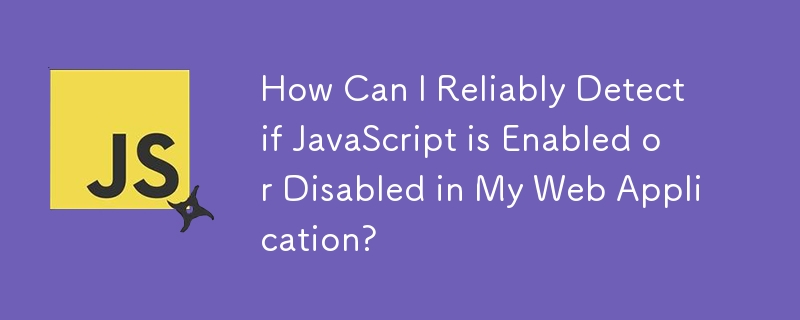

Determining JavaScript State: A Comprehensive Guide
In the realm of web development, the ability to detect if JavaScript is enabled or disabled is crucial for ensuring a seamless user experience. Numerous techniques can effectively accomplish this task:
noscript Element:
One approach involves utilizing the
<noscript>
<style type="text/css">
.pagecontainer {display:none;}
</style>
<div class="noscriptmsg">
You don't have Javascript enabled. Good luck with that.
</div>
</noscript>This method is reliable and visually indicative, hiding the site's main content and displaying a placeholder message instead. However, it requires additional effort to ensure the site's functionality without JavaScript.
Other Approaches:
Alternative techniques include:
Considerations:
It's important to note that these methods are not foolproof. Dedicated tools or browser extensions can bypass JavaScript detection mechanisms. Therefore, it's recommended to prioritize providing accessible content even without JavaScript.
The above is the detailed content of How Can I Reliably Detect if JavaScript is Enabled or Disabled in My Web Application?. For more information, please follow other related articles on the PHP Chinese website!
 The difference between console cable and network cable
The difference between console cable and network cable
 How to resume use of gas after payment
How to resume use of gas after payment
 fil coin price today
fil coin price today
 How to solve website restore error
How to solve website restore error
 css background code collection
css background code collection
 What is the reason why the computer screen is black but the computer is on?
What is the reason why the computer screen is black but the computer is on?
 What is the transfer limit of Alipay?
What is the transfer limit of Alipay?
 Absolute reference input method
Absolute reference input method




